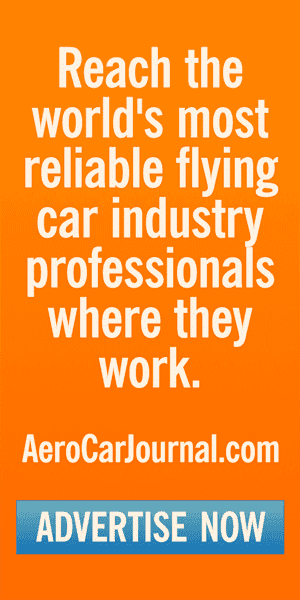Airfare. AirFair? How Much Will an eVTOL Ride Cost?

In the movies, the bad guy would run out of a building and hop in a taxi. Seconds later, the good guys would hail the next cab in line and say, “Follow that car!” After a harrowing chase, the bad guy gets out and runs, the good guys throw a pile of bills at the cabbie, and the plot thickens. Nobody asked – or cared – how much the ride cost.
But when UAM (or per, NASA, now AAM) takes off, people are going to want to know, “How much?”
Whether it’s coming out of your pocket or you have to fill out an expense sheet that someone from accounting will scrutinize, cost will matter.
How Much Will It Cost to Ride in a Flying Car?
Everyone from the eVTOL manufacturers to service providers (such as Uber) to the number-crunchers at the big accounting firms and NASA are doing their best to take an educated guess at how much an eVTOL ride from Point A in downtown Dallas to Point B in Plano or Frisco will cost.
It ain’t no easy ciphering neither. Everything from all-electric to hybrid models challenges the model. Weather, weight, distance, passengers per ride, operating costs to depreciation. At this point, nobody really knows. But here’s what the “smart money” is saying.
In its October, 2018, Executive Briefing, “Urban Air Mobility Market Study,” presented to the National Aeronautics and Space Administration Aeronautics Mission Research Directorate, NASA took a deep-dive into all the considerations around AAM.
The study reviewed everything from societal barriers, such as consumer apprehensions and then demand, to weather, costs, types of usage (air ambulance, air taxi, air shuttle), to regional markets, power sources, passenger loads, legal and regulatory barriers, and more. The study was able to reach certain educated conclusions about how much a hop aboard an eVTOL is going to set the average George or Jane Jetson back.
First, Where To, and for What Purpose?
NASA focused on 10 regional markets it surmised would be most likely to adopt and benefit from AAM: Dallas, Denver, Honolulu, Houston, Los Angeles, Miami, New York, Phoenix, San Francisco, and Washington, DC.
The various metro areas have regulations ranging from no drones to air ambulance priorities. Myriad aircraft certification and legal barriers will challenge the emerging industry and have an impact on the final cost an eVTOL passenger pays.
Noise and safety issues, such as whether or not a flight attendant was onboard, were of concern. Spatial, temporal, economic, physiological, and social factors all played a role in societal acceptance which, of course, ultimately impacts adoption and thus cost.
The bottom line: Trust. The public will need to have trust in the automation and aviation systems, the brand, the pilots, and air traffic controllers to be willing to fly. It’s going to have to be safe and affordable if AAM is to gain lift in the market.
Other factors, such as vehicle and battery weight, design drag, rotor diameter, and vehicle depreciation also factor in to operational costs.
Weather or Not
As with all aviation pursuits, weather will impact AAM. Will flight ops be constrained by weather conditions? Will weather conditions impact battery life? Will temperature extremes or winds effect passenger comfort during flight or takeoff and landing at vertiports? Might wind shear impact traffic management?
All these elements will combine to impact the costs an AAM operator faces and passengers will be asked to bear. Each market, from coast to coast, presents different weather scenarios year-round.
Ops-related Issues
The number of passengers an eVTOL can transport must be considered. The number of passengers per trip (the load factor) must be considered. How much energy is required for a 50-mile journey? What about dead-end trips, or the occasional need to detour? Even altitude will play into trip costs.
NASA’s comparison shows a range of possible cost scenarios, ranging from roughly $6 per passenger mile for a five-seat eVTOL to $11 per passenger mile for a two-seater; cheaper than a limo ride today but considerably more expensive than a ground taxi.
In a best case scenario with little or no constraints imposed by weather, traffic, and other factors, there could be 11 million daily trips transporting 16 million passengers. That would pencil out to a US$500 billion annual market value. Constrained by weather, traffic, and capacity, that market value could be as little as US$2.5 billion annually.
Medevac
NASA reckons the average cost for an eVTOL evacuation might be US$9,000; a hybrid vehicle might cost US$9,800. That actually compares favorably with a rotary helicopter medevac running about US$10,000 today.
Energize Me, Pronto!
The ability of AAM vehicles to either recharge their batteries or swap out spent batteries for new ones will further impact transportation costs.
Some estimate the time to recharge these next-generation batteries might not be any longer than the time it would take to unload and load passengers and clean the aircraft. But the proliferation of compact outer moldlines in some developing eVTOLs might add to the time needed to turn an aircraft around for its next flight.
That, of course, presents its own challenges: how many fresh batteries will you need today, and where will you need them, and when?
In the end, everyone involved is betting that we can do this. AAM will happen.
When? Sometime between now and 2030, for sure. Why? Because as President John F. Kennedy said of the goal of landing a man on the moon: “We do these things not because they are easy, but because they are hard.”
Want to continue to stay up-to-date about the latest developments in the eVTOL industry? Subscribe to AeroCar Journal now. It’s FREE (for a limited time)!
Join us on Twitter for the latest news, analysis, and insight in the eVTOL industry. AeroCarJ


